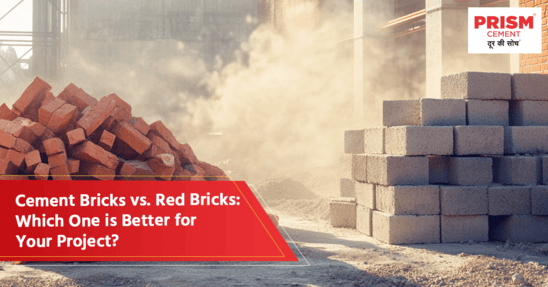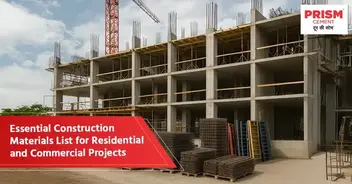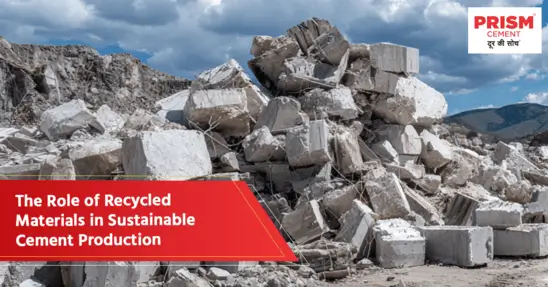Choosing the right bricks for your construction project is essential, as they form the foundation of any building. Two popular choices are cement bricks and red bricks, each offering unique advantages. Understanding the differences between these two types will help you make an informed decision based on your project’s requirements.
What Are Cement Bricks?
Cement bricks are manufactured using a mix of cement, sand and water. These bricks are known for their uniformity, strength and durability. They are widely used in modern construction due to their structural integrity and ability to withstand environmental conditions.
Many cement manufacturers use advanced processes to ensure high-quality bricks that meet industry standards. These bricks are also available in different sizes and shapes, offering versatility in construction projects.
What Are Red Bricks?
Red bricks, also known as clay bricks, have been used for centuries in construction. Made from natural clay and fired in kilns, red bricks have a traditional appearance, are strong and provide excellent insulation.
They are often preferred for residential buildings and smaller projects because of their classic look and heat retention qualities. Despite the rise of modern materials, red bricks remain a popular choice in many regions due to their proven reliability.
Key Differences Between Cement Bricks and Red Bricks
The debate of cement bricks vs. red bricks often centers around strength, cost and environmental impact. Here are the key differences:
- Material Composition: Cement bricks are made from cement and sand, while red bricks are made from natural clay.
- Strength: Cement bricks are generally stronger and more durable than red bricks, making them suitable for larger, load-bearing structures.
- Cost: Cement bricks are often more cost-effective in terms of production and long-term maintenance, while red bricks may be more expensive due to the manufacturing process.
- Insulation: Red bricks offer better natural insulation compared to cement bricks, which may require additional insulation layers for better energy efficiency.
- Environmental Impact: The manufacturing process for cement bricks can have a higher carbon footprint, while red bricks are typically considered more eco-friendly as they are made from natural clay.
Advantages & Disadvantages
Cement Bricks:
Advantages:
- Strong and durable, suitable for large-scale construction
- Uniform in shape and size, leading to cleaner construction
- Cost-effective in the long run, requiring less maintenance
- Resistant to environmental factors like moisture and fire
Disadvantages:
- Lower insulation properties compared to red bricks
- Requires additional insulation layers for better energy efficiency
Red Bricks:
Advantages:
- Excellent thermal insulation, reducing energy costs
- Red bricks are commonly used in heritage structures and areas where a rustic or vintage look is desired.
- Made from natural materials, making them environmentally friendly
Disadvantages:
- Less durable than cement bricks in high-load structures
- Prone to water absorption, which can lead to structural damage over time
- More expensive to produce and transport
Which One Should You Choose?
Choosing between cement bricks vs. red bricks depends on the specific needs of your project. If your focus is on strength, durability and cost-effectiveness, cement bricks are the better option, especially for larger buildings. They are also ideal for modern, high-rise structures and large-scale infrastructure projects.
However, if you prioritize insulation, sustainability and aesthetic appeal, red bricks may be the right choice, particularly for residential projects. Their natural composition and ability to retain heat make them an excellent option for homes in cooler climates. Cement bricks, known for their durability, affordability and uniform strength, are ideal for large-scale, modern construction projects, including high-rise buildings. Conversely, red bricks are unmatched in their natural insulation properties, traditional aesthetics and eco-friendly production process, making them the preferred choice for residential and heritage projects
Conclusion
When deciding between cement bricks vs. red bricks, consider the purpose of your project and the environmental conditions.
Both types of bricks have their pros and cons, but by understanding the differences, you can choose the right material to ensure the success and longevity of your construction project.
FAQs
Q1. What are the major differences between cement bricks and red bricks?
Answer: Cement bricks are stronger and more uniform, while red bricks provide better insulation and a traditional look. Cement bricks are made from cement and sand, while red bricks are made from clay.
Q2. Which type of brick offers better insulation for buildings?
Answer: Red bricks naturally insulate better due to their porous structure, reducing thermal conductivity compared to the dense composition of cement bricks.
Q3. Are cement bricks more cost-effective than red bricks?
Answer: Yes, cement bricks are generally more cost-effective due to lower production and maintenance costs, making them ideal for large-scale projects.
Q4. Which brick type is more eco-friendly and sustainable?
Answer: Red bricks are considered more eco-friendly because they are made from natural clay, whereas the production of cement bricks involves a higher carbon footprint.
Q5. How does the choice of bricks affect the overall structural integrity?
Answer: Cement bricks offer better structural integrity for load-bearing and large-scale projects, while red bricks are suitable for lighter structures and provide good thermal insulation.




